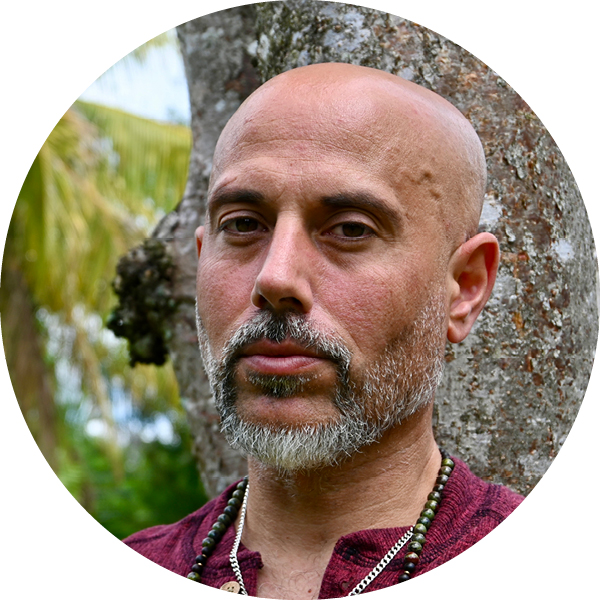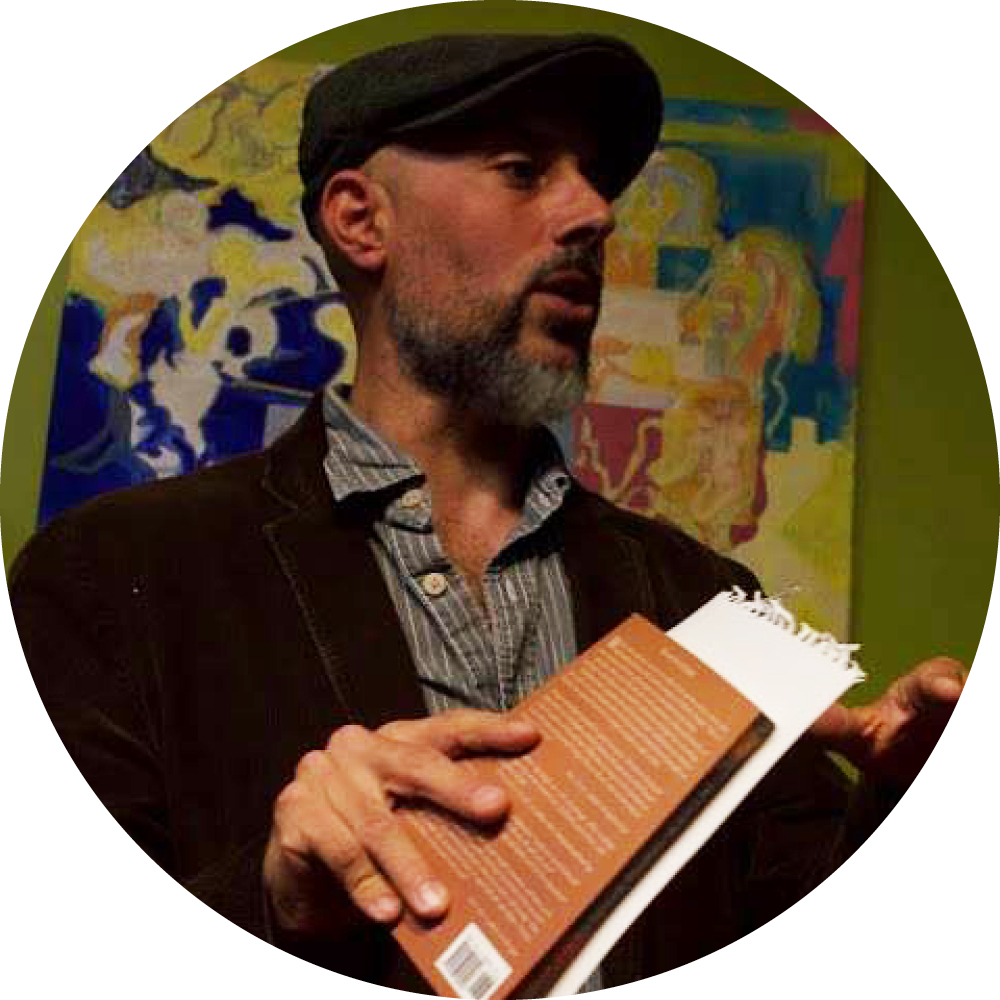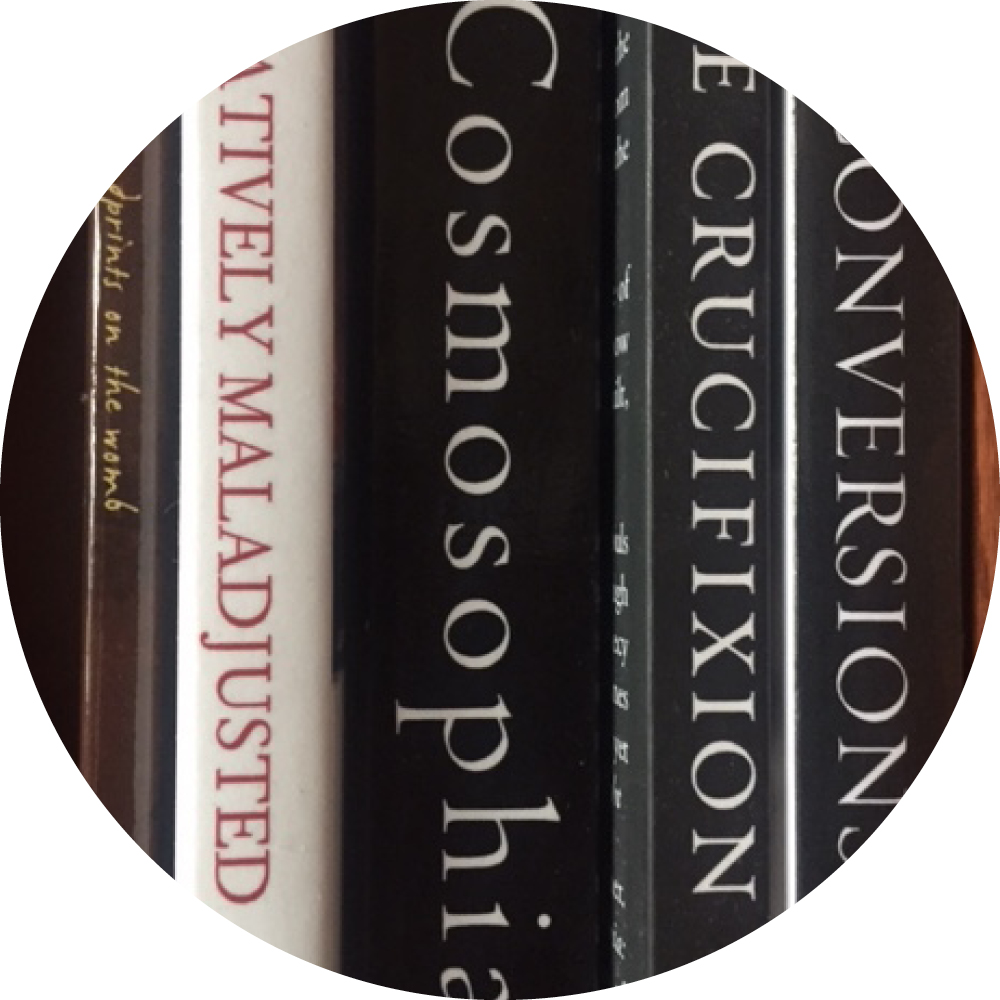Another Man’s Bread:
Italy, Exile & Dante’s Descent
By Theodore Richards
PART 1:
Another Man’s Bread
Tu proverai sì come sa di sale
lo pane altrui, e come è duro calle
lo scendere e ‘l salir per l’altrui scale.
You shall find out how salt
is the taste of another man’s bread, and how hard
is the way up and down another man’s stairs.
Dante’s Paradiso, Canto XVII, lines 58-60.
February, 2001 – After many months backpacking around the world, I fly from Tel Aviv to Napoli, the chaotic and beautiful city of my ancestors. I take the ferry to the nearby island of Ischia to find Sergio, whom I’d befriended in Tibet. He gives me a bike and I ride each day around the island. It’s midwinter, and without the tourists the island feels empty. In the evenings I meet up with Sergio. On my last night, he brings me to a family celebration. I eat and drink, understanding little of what is said. An old woman sits on my lap.
I return to Napoli to wander the streets, streets that are themselves works of art, twisted and labyrinthine, narrow and rutted. These streets have texture, unlike the Euclidian grid of the Chicago I’ve left. I can hear the texture in the dialect, taste it and smell it in the Vesuvian soil of tomatoes and flowers sold at the market. This is a Mediterranean city – a city in the middle of the world, intersections of peoples and languages and cultures. All of these things make it rich and deep. But now, in a shallow world, it is poor, scorned by the north, its shaded, textured people called “Arabs”. When the football club travels to Milan, they sing:
What a stench, the dogs are running,
all because the Neapolitans are coming.
Oh, cholerics buried by quake,
you’ve never seen soap, not even a cake.
Naples shit, Naples cholera,
you’re the shame of all Italia.
When my ancestors left, just like the people I encountered in Zimbabwe and Pakistan and Vietnam, it was the textured world, the world they loved and knew, the place where their ancestors’ bodies were buried in the earth and eaten every day in their bread, where their ancestors’ songs were sung each day in the dialect – they traded all this to participate in the capitalist world, a world that lacked the dimension not only of depth but also of time: emigration required them to forget their participation in the timeless. They had to forget who they were and all they’d left. So my own ancestors forgot it all, and left behind their depth and their memories, the dirty streets of Napoli for the wealth and promise of New Jersey.
I take the train up the coast to Rome. Again, the city is emptied of tourists – and all the more beautiful for it. I wander into churches and drink wine in the piazzas. And then I move on again, stopping in Florence, its echoes of Dante, and Venice, its twisted streets a work of poetry in itself. Venice is cold and misty. And sinking – like New Orleans, it is being swallowed by the sea, reduced to a mere museum.
I ride on a train from Venice to Paris in a sleeper car with two couples, each sleeping across from one another. The bed across from me is empty.
I would eventually make my way back to the United States and, eventually, settle into a different kind of life from the one I’d been living as a young man wandering the world. But those days as a wanderer would remain with me, as would my first trip to Italy as I, much later, pondered Italianness and what it means to be a wanderer in this world. I would have many teachers, but foremost among them would be an Italian poet.
PART 2:
A Dark Forest
Nel mezzo del cammin di nostra vita
mi ritrovai per una selva oscura,
ché la diritta via era smarrita.
In the middle of the journey of our life
I found myself within a dark forest,
For the straightforward pathway had been lost.
Dante’s Inferno, Canto I, Lines 1-3
I would encounter Dante many years later, closer to midlife. The above lines – the first lines of the Inferno – describe a man in exile. Dante had been banished from his home in Florence, forced to wander the Italian peninsula for the rest of his days. It was during this period of his life that the already-famous love poet wrote his masterpiece, La Commedia. It details his descent into hell and ascent through purgatory and heaven.
It integrates much of the theology, cosmology, and philosophy of medieval Christendom with his own personal journey. Heaven and hell, in Dante’s telling, are filled with Italians, the people he knew and loved and hated. I spent much of my life as a young man wandering the world. While my wandering gave me a sense of what Dante’s wandering days might have been like, I could engage even more deeply with his journey in middle age. For the first part of Dante’s journey is the journey we all must take: it is the classic mythic journey of descent into the darkness – of middle age, of exile and wandering – and return, to the stars, le stelle. Indeed, we need the darkness to see the stars. Individually, one can experience this journey through a deeper encounter with one’s inner life, or through suffering. But we can also encounter the depths collectively, as a people.
I’d like to consider this journey in light of the contrasting notions of Italianness that I discovered from my trip to Napoli and the Italian-American experience that I was exposed to in New Jersey and Rochester, New York. The Rochester in which I grew up had an Italian flavor. The working class boys would shout “minga!” when they got fouled on the soccer pitch. But I cannot say they were exactly Italian. These were Italian Americans. They’d mostly fled the city for working class suburbs. They’d become white.
My own Italian ancestors weren’t even really Italian, at least not in the modern sense. They’d come to America only a few decades after the formation of the Italian state; they surely considered themselves Neapolitan first, Italian second. They were Mediterranean people, living on the ruins of a once-great empire. Perhaps because they’ve been outsiders in Italy, they worked to become insiders in America. They came through Ellis Island like millions of other Italians, reviled for their brown skin and Catholicism, settling in Newark. They worked hard and raised their children to be Americans, giving them names like Betty and Rose. Amazingly, they sent all six off to college. My mother was born an American, fully immersed in the American dream, raised in suburban 1950s New Jersey – her mother had left Newark behind along with Catholicism and dialect, just as her grandparents had left Naples – to work hard for its own joyless sake. It’s a Faustian bargain: in exchange for their Americanness, their whiteness, all they have to do is forget.
The process of becoming fully American, for most Europeans, required them to become white. And what exactly does that mean? James Baldwin describes whiteness as “a metaphor for power.” Indeed, there was no such thing as a “white” person until the establishments of slavery in the New World necessitated it. Fearful of a class allegiance between the enslaved and the free poor, the wealthy enslavers established a permanent caste system. In North America, dominated by dualistic Puritanism, the “one-drop” law was established: Everyone was either white or black, and even “one drop” of African blood meant that one was tainted, subject to the cruelties and injustices of the American caste system.
As immigrants arrived from places other than northern Europe, it was uncertain where they fell in this hierarchy. To access the power of American whiteness – surely an enticing proposition – they merely had to forget who they were. The Italians could become “white.” Southern Italians, who made up the majority of Italian immigrants to the New World, had been considered something less than fully European Italians. They’d been looked down upon as more Arab or African than European. This wasn’t limited to football chants; toxic waste from northern factories was dumped in the south. But their acceptance of whiteness in America meant that they now had people they could look down on. It meant that in places like Bensonhurst – or in the working class suburbs of Rochester – they might hurl racial epithets at, or even physically attack, Black kids who dared to come into their neighborhood. It meant that they could buy into the American Dream, buy a nice house, send their kids to college.
But it also meant a profound loss. It meant the loss of what I refer to as the texture of life – the depth of their Mediterranean culture, a culture that defied the rigid, Puritan boundaries of the American racial binary.
As I encountered Dante in middle age, I understood his descent more profoundly than ever. And I remembered. I remembered my travels in Napoli, remembered my ancestors. They were a people in-between, a Mediterranean people. And they were, in America, a people in exile. The descent is required in order to know ourselves. American civilization rests upon the rejection of this textured, muddled space that we once occupied. It rejects the darkness of descent. And many Italians have rejected their darkness in favor of a sterile whiteness.
PART 3:
A New Life
In that book which is my memory
On the first page of the chapter that is the day when I first met you,
Appear the words, ‘Here begins a new life.’
Dante’s Vita Nuova
2024 America would be unrecognizable to the Italians who came here over a century ago. But in some ways, today’s America is not unlike the America in which those Italians found themselves. They would, for example, find a country defined by racial stratification, and the still-unresolved questions of the legacy of slavery. And they would find a nation of migrants, unwelcomed by those who’d come before. In embracing whiteness, Italian Americans participate in a cruel and vicious system of oppression, one that, in part, they themselves fled. What’s more, they’ve lost something.
American civilization rests upon a rejection of the darkness. In this case, I do not refer to the literal darkness; I mean the dark places within, where we encounter our true selves. Take a pill, have a drink, buy something at the mall, binge a new TV show, stare at your social media feed – anything to avoid the difficult questions, the depths of the true self. Dante’s exile forced him to descend. But it wasn’t merely the fact of his refugee status he had to contend with. He was at the midpoint of his life. A crossroads. He had to return to all the choices, political and personal, that had gotten him to the point. He had to contend with his loneliness. So, while his life was so different from the life most of us live today, the timelessness of La Commedia is found in the relatability of that experience, even today. The problem today is that, for too many of us, we try to numb ourselves, we shun the darkness – we are like the city with so much ambient light that we cannot see the stars.
This is also true collectively. In embracing whiteness, the Italians have avoided their truest selves, rejected the Dantean descent. What does the collective descent look like?
It begins by rejecting whiteness and embracing a fuller, richer, deeper heritage – the complexity of a Mediterranean culture. The notion that we honor Italians with statues to Columbus really never had anything to do with Italy – he’s really a nobody in Italy. He represents the notion that Italians can be oppressors, too. That they are “white” – as Baldwin says, holding the power.
I am suggesting that Italian-Americans could embrace a different kind of power – the power of remembrance. They could remember that they were once migrants, too. That they have more in common with the Venezueluans living in shelters than Columbus. So let us tear down Columbus and erect a statue of Dante, perhaps, a memory not of oppression, not of some fabricated history in which we were all conquerors, but a true history, in which we all first had to descend in order to reach the stars, le stelle.

Re-sources
Re-Imagining Education

Empowering educators to take a deeper look at the stories told in our schools and to re-imagine them in transformative and
nurturing learning spaces.
Learning Opportunities

Classes, workshops, and lectures that help to empower people to re-imagine who they are and their place in the world.
CWP

The Chicago Wisdom Project offers a alternative to the industrial and corporate models of education that have become increasingly prevalent in the American educational landscape.
